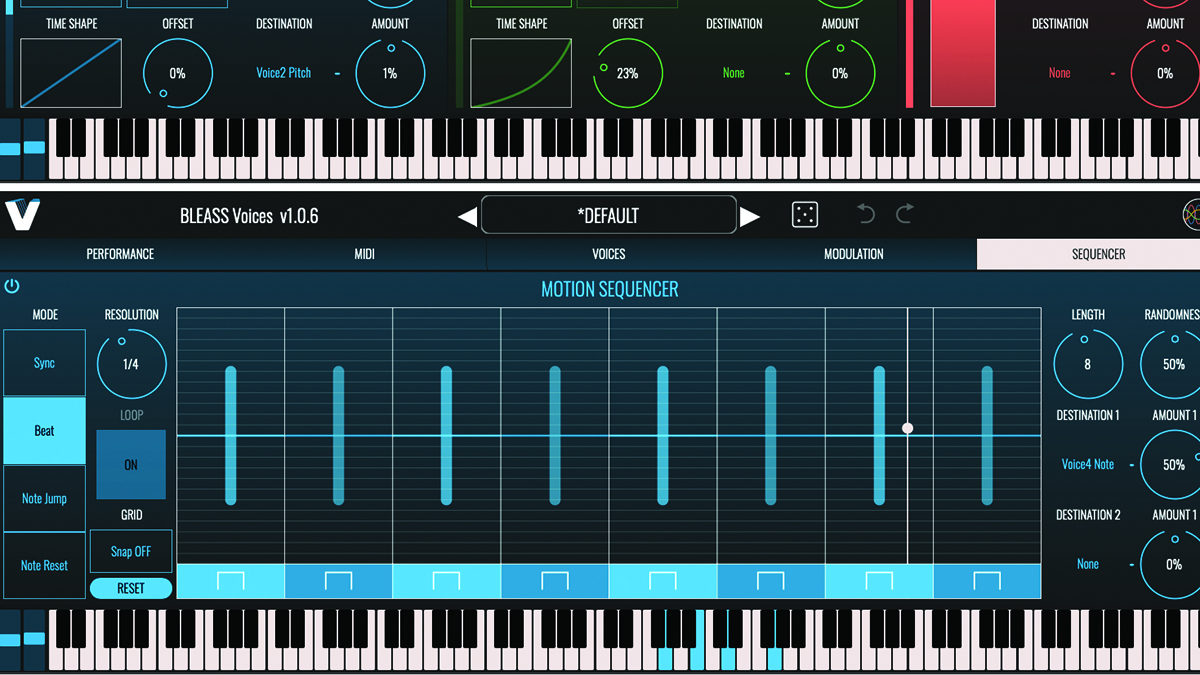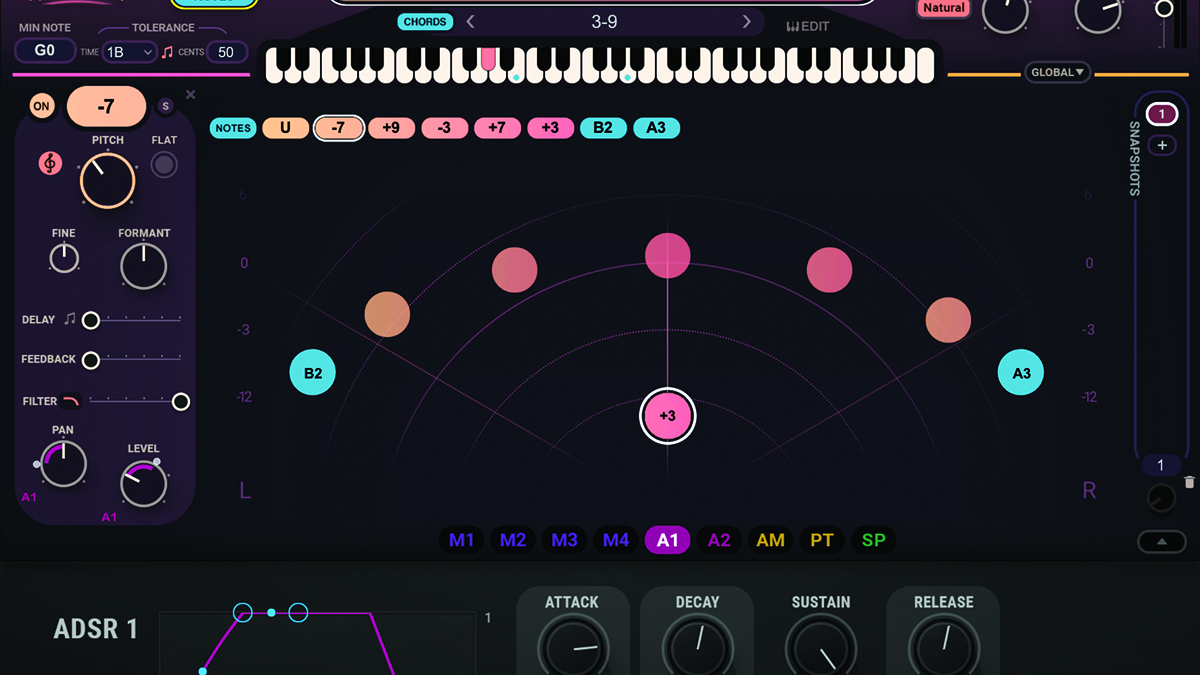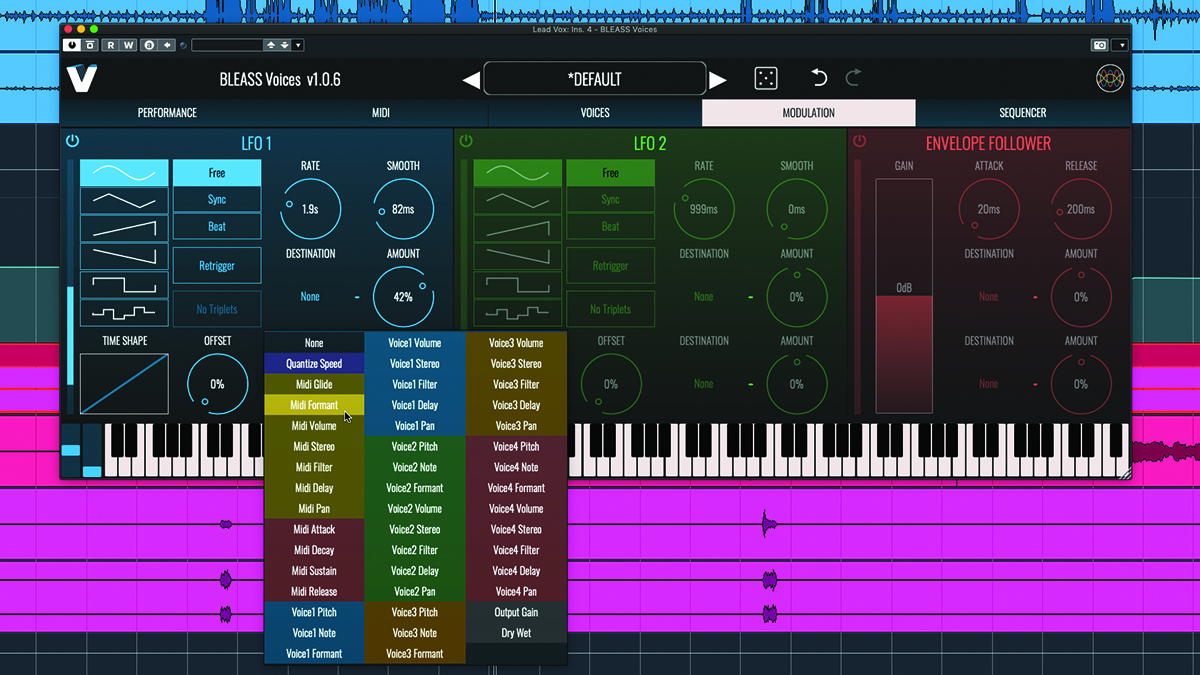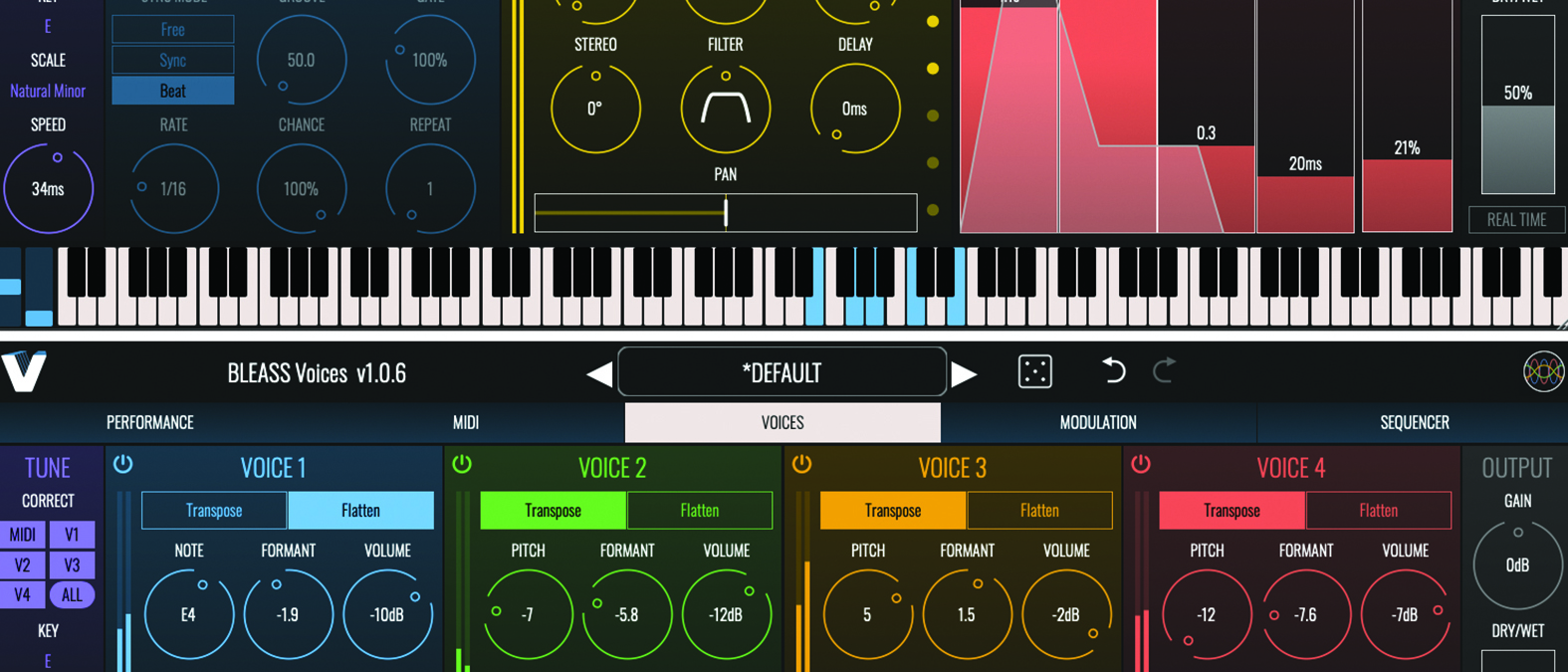MusicRadar Verdict
BLEASS Voices allows you to indulge your choral needs with rich and complex harmonies that are simple to create.
Pros
- +
Intelligent pitch correction keeps harmonies within key and scale.
- +
Synth-style performance and realtime modulation sources.
- +
Can enable independent per-voice output busses.
Cons
- -
Lack of fine-tuning control means not so good for ADT.
MusicRadar's got your back
BLEASS Voices: What is it?
macOS: 10.9 and later (64-bit only) (including macOS 11 Big Sur and M1 processors). VST3 (64-bit). Audio Unit. AAX.
Windows: 8 and later. VST3 (64-bit) / AAX.
Buy at Plugin Boutique
Despite its initial focus having been more directed towards developing apps and AUv3 plugins for iOS devices, French developer BLEASS has now firmly established itself in the desktop arena too, with all of its wares available for both desktop – and iOS – based users.
A new addition to this burgeoning collection is BLEASS Voices, which is a powerful and flexible 12-voice harmoniser.

BLEASS Voices: Performance and verdict
As a harmoniser, Voices is of course heavily geared towards use with vocals, but its ability to generate up to 12 independent harmonies from a single monophonic input, and to even output each harmony line through its own mix bus, ensures the plugin is useful in many other scenarios and contexts.

• Waves Harmony
Eight harmony voices and three different workflows make a very capable modern plugin harmoniser.
• Antares Harmony Engine
Brings Antares’ advanced vocal manipulation tech to a harmoniser.
The inclusion of a super low-latency Real Time processing mode adds to this flexibility, making Voices a good choice for those needing to use it for live guitar and synth harmonisation too.
Four of Voices’ harmonised lines are created based on the pitch of the input signal, with the pitch detector recognising frequencies between 66Hz and 5.2kHz. Each of these harmony lines can apply a pitch shift of +/- 12 semitones to the source signal, but the absence of fine tuning adjustment makes Voices less useful for automatic double tracking than it otherwise would be. In addition, each harmony line can be switched to Flatten mode, forcing the incoming signal to a selected pitch.
Whether transposing or fixing the pitch, each voice can have its formant frequency shifted, can have a delay and stereo spread applied, can be filtered through a band-pass filter, and have its pan position set. Fixed transpositions of this kind can be a bit clumsy, and prone to generating harmonies that fall outside of the desired key and scale, but Voices sorts this out with an intelligent pitch corrector. This can be applied to the transposed voices on a per-voice basis, and can also be applied globally to the remaining set of eight voices (which we’ll be getting to in just a moment). Although it’s undeniably a useful feature, the corrector only offers basic major, minor and pentatonic scales for you to work with – you can work around this a little bit if you have strong music theory knowledge, but a wider choice of scales would have been a preferable solution.
Users can generate up to eight additional voices based on incoming MIDI notes. These voices have the same selection of tweaks to formant, delay, etc, but these adjustments are applied globally to all MIDI-generated voices. On top of all that, the plugin features an arpeggiator that can be used to trigger the MIDI-generated voices, and those voices are also fed through an ADSR envelope, triggered by the MIDI notes, that shapes a harmony line’s dynamics.
Want all the hottest music and gear news, reviews, deals, features and more, direct to your inbox? Sign up here.
We’ve praised the BLEASS design before… it really does know how to create a corker of a UI
Throw in the plugin’s modulation abilities (see below) and Voices starts to give the strong impression of being a synthesiser as well as a harmoniser. This impression is made all the stronger by BLEASS’ instantly recognisable interface design, with all of Voices’ modulators looking exactly like their counterparts that are found in BLEASS’ products. We’ve praised the trademark BLEASS design before, delivering as it does a perfect balance between parameter control and visual feedback, and here we are doing it again: these guys really do know how to create a corker of a user interface!

Synth-style modulators
The inclusion of an arpeggiator and ADSR envelope lends Voices a synth flavour. This impression is strengthened by the presence of various performance and realtime modulation sources, and over 60 destination parameters (the exact number depends on the source).
On the performance side of things, Voices recognises mod wheel, note on velocity, note off velocity and keyboard tracking. The plugin also recognises MPE Slide and MPE Pressure, the latter falling back to standard MIDI channel aftertouch in the absence of an MPE-capable controller. A whole page of the interface is dedicated to setting the response curves for these incoming controllers, and for mapping each to up-to two destination parameters.
Real-time modulators are provided in the form of a pair of BLEASS’ advanced LFOs that allow complex waveforms to be created, an envelope follower that responds to the dynamics of the incoming signal, and a step sequencer that pumps out a repeating pattern of control curves and values.
As with the performance controllers, each of these modulators can be mapped to any two of the plugin’s 65 modulation destinations.
Verdict
It’s important to keep in mind the distinction between BLEASS Voices’ harmonisation remit and the functionality offered by a pitch correction tool sitting in the same bracket as, for example, Auto-Tune. Voices can correct pitch, by virtue of its pitch quantiser, but that’s not the name of the game in this situation. Rather, BLEASS Voices will equip you with a powerful yet easy-to-use (not to mention easy-to-process) toolset with which to create some extremely detailed harmony lines and to satisfy everyone’s inner choir master.
MusicRadar verdict: BLEASS Voices allows you to indulge your choral needs with rich and complex harmonies that are simple to create.
BLEASS Voices: The web says
"This plugin is impressive, comprehensive, overwhelming and exciting all at the same time. This pretty much does the job of multiple plugins all in one box."
Audio Plugin Guy
BLEASS Voices: Hands-on demos
BLEASS
Polarity Music
Jakob Haq
BLEASS Voices: Specifications
- macOS 10.9 and later (64-bit only) (including macOS 11 Big Sur and M1 processors). VST3 (64-bit). Audio Unit. AAX.
- Windows 8 and later. VST3 (64-bit) / AAX.
- Buy at Plugin Boutique
